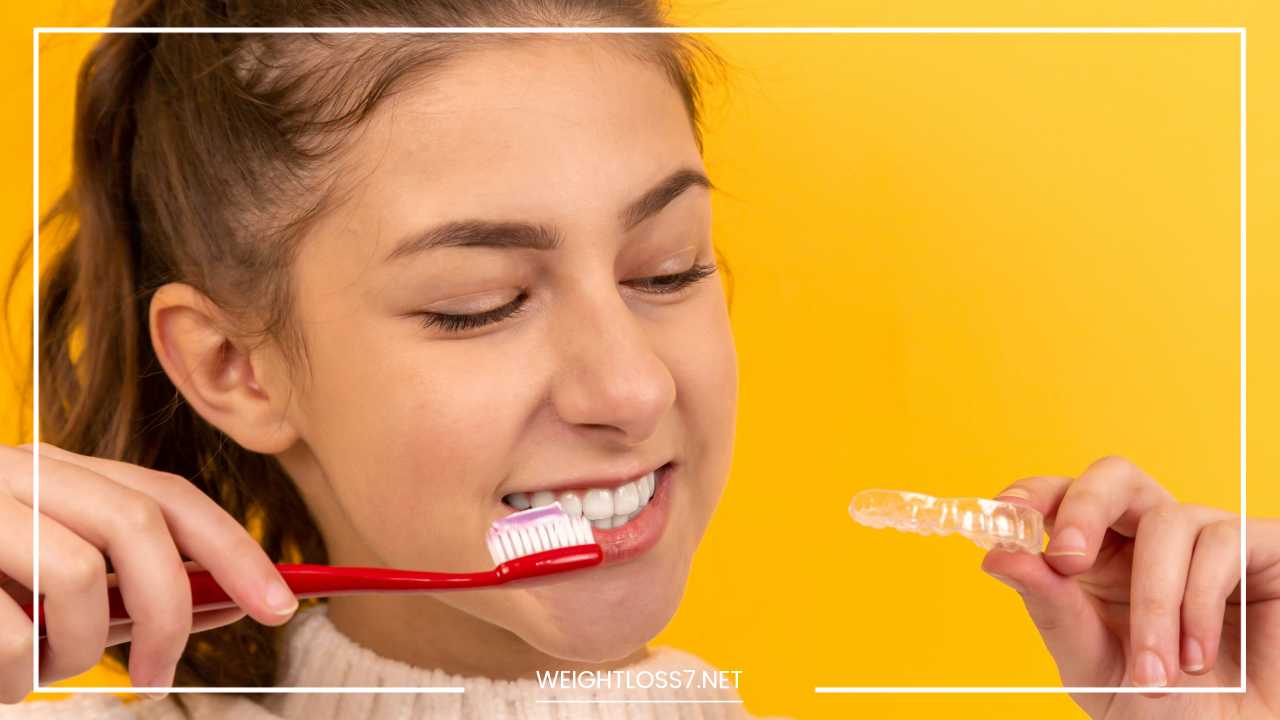How to Get White Teeth

White Teeth
Shining Smile Secrets: How to Achieve Bright, White Teeth
A radiant smile is more than just aesthetics; it’s a confidence booster, a social lubricant, and a nonverbal cue that projects positivity and warmth.
But for many of us, achieving that pearly white smile can feel like an uphill battle. Between dietary choices, lifestyle habits, and the natural effects of aging, teeth can lose their luster and take a toll on our self-assurance.
This comprehensive guide delves into the world of teeth whitening, exploring a variety of methods to help you achieve a brighter, healthier smile.
We’ll explore the science behind whitening, discuss at-home and professional treatment options, delve into healthy habits for long-lasting results, and answer some frequently asked questions to empower you on your smile journey.
Understanding the Science of Whiteners
Before diving into specific methods, let’s shed light on how whiteners work. Teeth discoloration can be caused by two main culprits:
- Stains: These are surface-level discolorations caused by food, drinks (like coffee, tea, or red wine), smoking, and even certain medications.
- Enamel Erosion: This is the gradual thinning of the tooth’s outermost layer, revealing the dentin underneath, which has a naturally yellow hue. The dentin also becomes more susceptible to staining over time.
Whiteners target these issues in different ways:
- Abrasives: These gently scrub away surface stains, like the baking soda found in some toothpastes. They work best for extrinsic stains but have minimal effect on deeper discoloration.
- Bleaches: These products, often containing hydrogen peroxide or carbamide peroxide, break down stain molecules within the tooth enamel and dentin, lightening the overall tooth color. Bleaches are more effective for deeper stains and intrinsic discoloration.
At-Home Whitening Solutions: A DIY Approach
For those seeking a budget-friendly approach, several at-home methods can help brighten your smile. However, it’s important to manage expectations and understand the limitations of these methods:
-
Brushing with Whitening Toothpaste: These toothpastes contain mild abrasives and sometimes low levels of peroxide to remove surface stains. They’re a gentle, daily option for maintaining a brighter smile, but results may be subtle and take time.
-
Natural Whitening Remedies: These age-old methods have been passed down for generations, but their effectiveness can vary. Here’s a closer look at some popular options:
- Baking Soda and Hydrogen Peroxide Paste: This mixture can be effective for removing surface stains. However, use caution. Baking soda is mildly abrasive, and overuse can damage enamel. Hydrogen peroxide, while a bleaching agent, is at a low concentration in drugstore solutions (usually 3%). For a paste, dilute 3% hydrogen peroxide with water to create a 1.5% solution and mix it with baking soda in a 1:2 ratio (one part hydrogen peroxide solution to two parts baking soda). Brush gently for a short period (1-2 minutes) and rinse thoroughly. Discontinue use if you experience any sensitivity.
- Strawberries: The malic acid in strawberries may help remove surface stains. However, the effect is likely minimal, and the sugar content can be detrimental to oral health if not rinsed thoroughly afterward. Mash a ripe strawberry and brush it on your teeth for a few minutes before rinsing thoroughly with water.
- Fruits and Vegetables: Eating crunchy fruits and vegetables like apples, celery, and carrots can increase saliva production, which helps wash away stains naturally. However, relying solely on this method may not be sufficient for significant whitening.
Important Considerations for At-Home Methods:
- Sensitivity: Some at-home methods, especially those with abrasives or peroxide, can cause tooth sensitivity. Discontinue use if you experience discomfort and consult your dentist for alternative suggestions.
- Effectiveness: At-home methods may take longer to show results compared to professional treatments and may not be as effective for deep stains or enamel erosion. Be patient and realistic about your expectations.
- Enamel Damage: Overuse of abrasive methods can damage tooth enamel. Use them gently and consult your dentist if unsure about the suitability of a particular method for your teeth.
Professional Teeth Whitening Treatments: A Dentist-Supervised Approach
For a more dramatic and long-lasting whitening effect, professional treatments offered by your dentist are the gold standard:
- In-Office Whitening: This treatment involves applying a powerful bleaching agent to your teeth, often activated by a special light source. The dentist will protect your gums and ensure proper application. Results are usually visible within one visit, making it a popular choice for those seeking a quick turnaround.
- Take-Home Whitening: Your dentist will create custom-fitted trays that hold a whitening gel with a lower concentration of peroxide than in-office treatments. You wear these trays at home for a prescribed period, usually for a few hours daily or overnight. This method offers a more gradual whitening process and allows for greater control over sensitivity.
Choosing the Right Whitening Option for You
With a variety of whitening methods available, choosing the right one depends on your individual needs, budget, and desired timeline. Here are some factors to consider:
- Severity of Discoloration: For mild surface stains, at-home whitening toothpastes or natural remedies might suffice. For deeper stains or intrinsic discoloration, professional treatments are likely more effective.
- Sensitivity: If you have sensitive teeth, discuss options with your dentist. They can recommend gentler whitening methods or treatments with desensitizing agents.
- Budget: At-home methods are generally more affordable than professional treatments. However, professional treatments offer faster and more predictable results, potentially saving you money in the long run if you require multiple at-home applications.
- Time Commitment: In-office whitening offers the quickest results, while take-home whitening and at-home methods take longer. Consider your schedule and how much time you’re willing to dedicate to whitening.
Maintaining Your White Smile: Habits for Long-Lasting Results
Once you’ve achieved your desired level of whiteness, here are some key habits to keep your smile bright and sparkling:
- Maintain Good Oral Hygiene: This is the cornerstone of a healthy smile and essential for maintaining whitening results. Brushing twice daily for two minutes with a fluoride toothpaste, flossing daily, and getting regular dental cleanings (every six months) are crucial for removing stains and preventing future discoloration.
- Limit Staining Foods and Drinks: We all have our favorite indulgences, but be mindful of how they affect your teeth. Coffee, tea, red wine, dark berries, and certain curries can stain teeth. Enjoy them in moderation, and rinse your mouth with water afterward to minimize staining.
- Quit Smoking: Smoking is a major cause of tooth stains and discoloration. It also weakens your gums and increases your risk of gum disease. Quitting smoking is not only good for your oral health but for your overall well-being.
- Consider Touch-Up Treatments: Whitening results can gradually fade over time. Discuss touch-up options with your dentist, such as occasional use of at-home whitening strips or a professional whitening session.
Frequently Asked Questions: Addressing Your Whitening Concerns
Here are some commonly asked questions about teeth whitening to address any lingering doubts:
- Is teeth whitening safe? Generally, teeth whitening is safe when done correctly. However, consult your dentist if you have:
- Sensitive teeth
- Gum disease
- Cracked or chipped teeth
- Pregnant or breastfeeding
- How long do whitening results last? The longevity of results depends on your habits. With proper care, professional whitening can last for several years. At-home methods may require more frequent touch-ups.
- Are there any side effects to teeth whitening? Some people experience temporary tooth sensitivity during whitening, especially with at-home methods. This usually subsides once treatment is stopped.
- Can teeth whitening damage my teeth? Overuse of abrasive whitening products or improper use of professional treatments can damage tooth enamel. It’s crucial to follow dentist instructions and choose methods suitable for your teeth.
A Radiant Smile Within Reach
A bright, white smile is not just about aesthetics; it’s a reflection of confidence and overall well-being. By understanding the science of whitening, exploring different methods, and adopting healthy habits, you can achieve a smile that shines from the inside out.
Remember, consult your dentist to discuss your whitening goals and choose the safest and most effective approach for your unique situation.
With the right strategy, you can unlock the power of your smile and radiate confidence in every interaction.
Beyond Whitening: A Holistic Approach to Oral Health
While a white smile is undeniably beautiful, it’s just one aspect of a healthy mouth. Here are some additional tips for achieving and maintaining optimal oral health:
- Diet and Nutrition: What you eat plays a significant role in your oral health.
- Choose nutrient-rich foods like fruits, vegetables, and dairy products that provide essential vitamins and minerals for strong teeth and gums.
- Limit sugary drinks and processed foods, which can contribute to tooth decay and gum disease.
- Consider including calcium-rich foods like leafy greens and cheese to support strong tooth enamel.
- Hydration: Drinking plenty of water throughout the day helps keep your mouth moist, washes away food particles, and promotes saliva production. Saliva is a natural defense against bacteria and helps neutralize acids in the mouth that can erode tooth enamel.
- Lifestyle Habits: Certain lifestyle choices can impact your oral health.
- Manage stress: Chronic stress can weaken your immune system and make you more susceptible to gum disease. Practice stress-relieving techniques like yoga or meditation.
- Get enough sleep: Adequate sleep allows your body to repair and restore itself, including your oral tissues. Aim for 7-8 hours of sleep each night.
- Regular Dental Checkups: Don’t underestimate the importance of regular dental checkups and cleanings. Your dentist can identify and address any potential problems early on, preventing them from becoming more serious and costly issues down the road. They can also provide personalized advice on maintaining a healthy smile.
A Smile for Every Occasion: Embracing Your Unique Smile
While a bright white smile is often considered the ideal, it’s important to remember that healthy teeth come in a variety of shades. Intrinsic factors like genetics and age can influence your natural tooth color. Here are some tips for embracing your unique smile:
- Focus on overall oral health: A healthy smile, regardless of shade, is more attractive than a white smile with underlying problems. Prioritize good oral hygiene practices and regular dental care.
- Enhance your smile with other features: Healthy, well-maintained lips and a genuine smile can do wonders for enhancing your overall appearance. Consider using lip balm to keep your lips hydrated and practice smiling with confidence.
- Consult a cosmetic dentist: If you have concerns about the shape or size of your teeth, a cosmetic dentist can offer solutions like veneers or bonding to create a smile you love.
Final Word: A Smile Journey, Not a Destination
Achieving a bright, healthy smile is a journey, not a destination. By understanding the options available, adopting healthy habits, and prioritizing your overall oral health, you can unlock the power of your smile and radiate confidence in every interaction.
Remember, a smile is a universal language that speaks volumes about your personality and well-being. So, take charge of your smile journey, embrace your unique smile, and let it shine brightly!

















